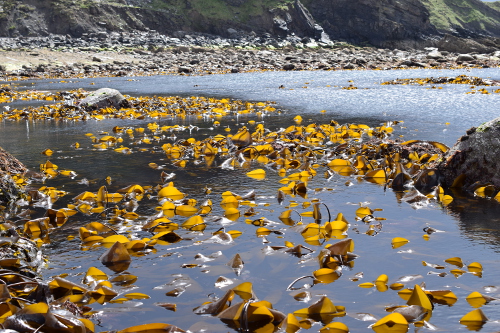Coastal foraging offers a wonderful opportunity to gather fresh, wild shellfish directly from the shoreline. Foragers can find a variety of delicious shellfish, from clams and mussels to oysters and scallops, but identifying which species are edible—and safe to eat—is crucial for a successful harvest. Learning how to properly identify shellfish can help you avoid harmful species and ensure a bountiful and tasty foraging experience.
Before heading out to explore the coastline, it’s essential to understand the basics of coastal foraging. This includes familiarizing yourself with local guidelines and knowing which shellfish species are abundant in the area.
1. Clams
Clams are one of the most common types of shellfish found in coastal regions. When foraging for clams, you’ll typically find them buried in sand or mud flats. Look for small holes or dimples in the surface, which indicate the presence of clams underneath. There are several edible species of clams, including:
- Littleneck Clams: Small, round, and ridged, these clams are often found in sandy areas.
- Razor Clams: Long and narrow, razor clams are commonly found in muddy shores. Their shape resembles an old-fashioned straight razor.
- Soft-Shell Clams (Steamers): Known for their thin, fragile shells, these clams are often harvested for steaming or frying.
When harvesting clams, make sure to check local regulations regarding size limits and seasons to avoid overharvesting and protect the environment.
2. Mussels
Mussels are easily identified by their dark blue or black shells and can usually be found attached to rocks or piers along the shoreline. They grow in clusters and are easily collected by hand. When foraging for mussels, look for those that are tightly closed, as open shells can indicate the mussel is dead and unsafe to eat.
The common edible species include:
- Blue Mussels: These are the most commonly found mussels in temperate waters and are characterized by their oval, dark blue or black shells.
- California Mussels: Larger than blue mussels, California mussels can be found along the Pacific coast and have a more elongated shape.
3. Oysters
Oysters are another prized shellfish for coastal foragers. They are often found in estuaries and along rocky shores, clinging to rocks, reefs, or piers. Oysters have rough, irregularly shaped shells that are usually grayish in color. Some species of edible oysters include:
- Pacific Oysters: Commonly found in the Pacific Northwest, these oysters have a fluted shell and can grow quite large.
- Eastern Oysters: Found along the Atlantic coast, these oysters have more rounded shells and are a popular choice for raw consumption.
Be sure to only harvest oysters from clean waters, as they can filter and accumulate toxins from their environment.
4. Scallops
Scallops are easily recognizable by their fan-shaped shells with ridges radiating from the hinge. They can often be found in shallow waters, hiding in the sand or attached to seaweed. Unlike clams and mussels, scallops have the ability to swim by quickly opening and closing their shells.
Edible scallops include:
- Bay Scallops: Smaller in size and commonly found in shallow bays and estuaries.
- Sea Scallops: Larger and typically found in deeper waters, but can sometimes be harvested along the shore during low tide.
When foraging for scallops, be sure to look for shells that are closed or that close when touched, as this indicates they are still alive and fresh.
5. Cockles
Cockles are small, heart-shaped bivalves often found in sandy or muddy flats. They have ribbed, round shells and can be easily identified by their distinct shape. Cockles are prized for their sweet flavor and are commonly used in seafood dishes around the world. When foraging for cockles, dig into the sand or mud to uncover them, as they often burrow just below the surface.
Conclusion
Identifying edible shellfish is a crucial skill for any coastal forager. By familiarizing yourself with the appearance and habitats of common shellfish like clams, mussels, oysters, scallops, and cockles, you can safely enjoy the rewards of foraging. Always follow local regulations and safety guidelines, and be mindful of the environment to ensure that coastal ecosystems remain healthy for future foragers.
